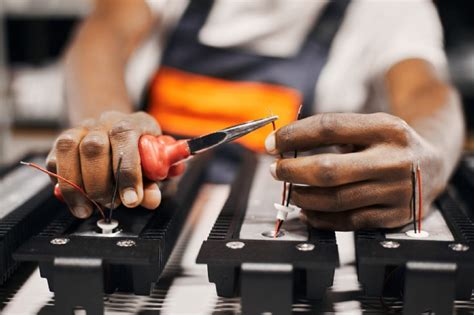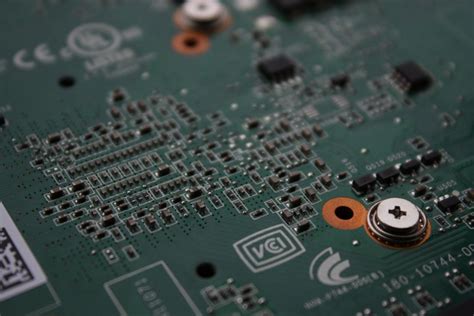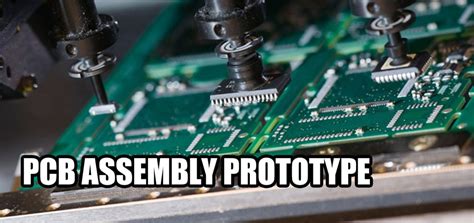The PCBA assembly and welding process of FPC is different from that of rigid circuit boards
FPC is also called flexible circuit boards. The PCBA assembly and welding process of FPC is very different from that of rigid circuit boards. Because the FPC board is not hard enough and is relatively soft, if a special carrier is not used, it cannot be fixed and transmitted, and it is also impossible to complete basic SMT processes such as printing, patching, and furnace passing.
1.Pretreatment of FPC
FPC boards are relatively soft and are generally not vacuum packed when leaving the factory. They are easy to absorb moisture in the air during transportation and storage. They need to be pre-baked before SMT casting to slowly and forcibly discharge the moisture. Otherwise, under the high temperature impact of reflow soldering, the moisture absorbed by the FPC will quickly gasify into water vapor protruding from the FPC, which is easy to cause FPC delamination, blistering and other defects.
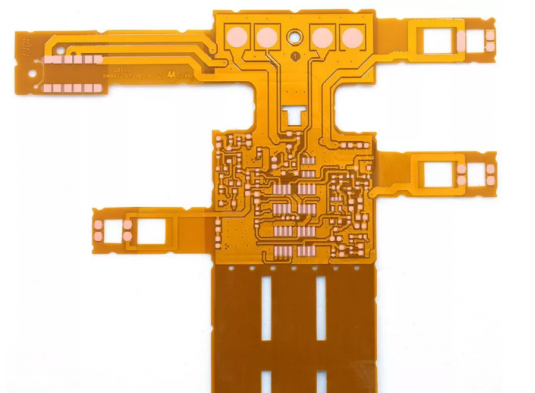
The pre-baking conditions are generally 80-100℃ for 4-8 hours. In special cases, the temperature can be raised to above 125℃, but the baking time needs to be shortened accordingly. Before baking, a small sample test must be conducted to determine whether the FPC can withstand the set baking temperature. You can also consult the FPC manufacturer for appropriate baking conditions. During baking, the FPC cannot be stacked too much. 10-20PNL is more appropriate. Some FPC manufacturers will put a piece of paper between each PNL for isolation. It is necessary to confirm whether this piece of paper for isolation can withstand the set baking temperature. If not, the isolation paper needs to be removed before baking. The baked FPC should not have obvious discoloration, deformation, warping and other defects. It needs to be qualified by IPQC before it can be put into production.
2.Production of special carrier
According to the CAD file of the circuit board, the hole positioning data of the FPC is read to manufacture high-precision FPC positioning templates and special carriers, so that the diameter of the positioning pins on the positioning template matches the positioning holes on the carrier and the aperture of the positioning holes on the FPC. Many FPCs are not of the same thickness because they need to protect some circuits or for design reasons. Some places are thicker and some places are thinner.
Some have reinforced metal plates. Therefore, the joints between the carrier and the FPC need to be processed, polished and grooved according to the actual situation. The purpose is to ensure that the FPC is flat during printing and mounting. The material of the carrier is required to be light, thin, high-strength, less heat absorption, fast heat dissipation, and small warping deformation after multiple thermal shocks. Commonly used carrier materials include synthetic stone, aluminum plate, silicone plate, special high-temperature resistant magnetized steel plate, etc.
3. Production process.
Here we take ordinary carrier as an example to elaborate on the SMT points of FPC. When using silicone plate or magnetic fixture, the fixation of FPC is much more convenient, and no tape is needed. The process points of printing, patch, welding and other processes are the same.
(1)Fixation of FPC:
Before SMT, the FPC needs to be accurately fixed on the carrier. It is particularly important to note that the shorter the storage time from the time the FPC is fixed on the carrier to the time of printing, mounting and welding, the better. There are two types of carriers: with positioning pins and without positioning pins. The carrier without positioning pins needs to be used in conjunction with the positioning template with positioning pins. First, put the carrier on the positioning pins of the template so that the positioning pins are exposed through the positioning holes on the carrier. Put the FPC on the exposed positioning pins one by one, and then fix it with tape. Then separate the carrier from the FPC positioning template for printing, mounting and welding. The carrier with positioning pins has been fixed with several spring positioning pins about 1.5mm long. The FPC can be directly put on the spring positioning pins of the carrier one by one, and then fixed with tape. In the printing process, the spring positioning pins can be completely pressed into the carrier by the steel mesh, which will not affect the printing effect.
Method 1 (fixed with single-sided tape): Use thin, high-temperature-resistant single-sided tape to fix the four sides of the FPC on the carrier board to prevent the FPC from deflecting or warping. The tape viscosity should be moderate, and it must be easy to peel off after reflow soldering, and there should be no residual adhesive on the FPC. If an automatic tape machine is used, it can quickly cut the tape of the same length, which can significantly improve efficiency, save costs, and avoid waste.
Method 2 (fixed with double-sided tape): First, use high-temperature-resistant double-sided tape to stick on the carrier board, the effect is the same as the silicone plate, and then stick the FPC to the carrier board. Pay special attention to the viscosity of the tape not being too high, otherwise it is easy to cause the FPC to tear when peeling after reflow soldering. After repeated furnaces, the viscosity of the double-sided tape will gradually decrease. When the viscosity is too low to reliably fix the FPC, it must be replaced immediately. This station is a key station to prevent the FPC from getting dirty, and finger cots are required for operation. Before reusing the carrier, it needs to be properly cleaned. You can use non-woven cloth dipped in detergent to scrub it, or use an anti-static dust-sticking roller to remove surface dust, tin beads and other foreign matter. Avoid using too much force when taking and placing FPC. FPC is fragile and prone to creases and breaks.
(2)FPC solder paste printing:
FPC has no special requirements for the composition of solder paste. The size and metal content of the solder ball particles are based on whether there is a fine-pitch IC on the FPC. However, FPC has higher requirements for the printing performance of solder paste. The solder paste should have excellent thixotropy. The solder paste should be easy to print and demold and can be firmly attached to the FPC surface. There will be no defects such as poor demolding, blocking the steel mesh leaks, or collapse after printing.
Because the FPC is loaded on the carrier board, there is a high temperature resistant tape for positioning on the FPC, which makes its plane inconsistent. Therefore, the printed surface of the FPC cannot be as flat and consistent in thickness and hardness as the PCB. Therefore, it is not suitable to use a metal scraper, but a polyurethane scraper with a hardness of 80-90 degrees should be used. The solder paste printer is best equipped with an optical positioning system, otherwise it will have a greater impact on the printing quality. Although the FPC is fixed on the carrier board, there will always be some tiny gaps between the FPC and the carrier board. This is the biggest difference from the PCB hard board. Therefore, the setting of equipment parameters will also have a greater impact on the printing effect.
The printing station is also a key station to prevent the FPC from being dirty. It is necessary to wear finger gloves when working. At the same time, keep the station clean and wipe the steel mesh frequently to prevent the solder paste from contaminating the gold fingers and gold-plated buttons of the FPC.
(3).FPC patch:
According to the characteristics of the product, the number of components and the patch efficiency, medium and high-speed patch machines can be used for mounting. Since each FPC has an optical MARK mark for positioning, there is little difference between SMD mounting on FPC and mounting on PCB. It should be noted that although FPC is fixed on the carrier, its surface cannot be as flat as the PCB hard board. There must be a local gap between FPC and carrier. Therefore, the nozzle lowering height, blowing pressure, etc. need to be accurately set, and the nozzle moving speed needs to be reduced. At the same time, FPC is mostly connected boards, and the yield rate of FPC is relatively low, so it is normal for the whole PNL to contain some bad PCS. This requires the placement machine to have a BAD MARK recognition function. Otherwise, when producing such non-whole PNLs that are all good boards, the production efficiency will be greatly reduced.
(4).FPC reflow soldering:
A forced hot air convection infrared reflow soldering furnace should be used, so that the temperature on the FPC can change more evenly and reduce the occurrence of poor welding. If single-sided tape is used, because only the four sides of the FPC can be fixed, the middle part will be deformed under the hot air state, the pad will easily tilt, and the molten tin (liquid tin at high temperature) will flow to produce empty soldering, continuous soldering, and tin beads, making the process defect rate higher.
1) Temperature curve test method:
Due to the different heat absorption of the carrier board and the different types of components on the FPC, the speed of temperature rise after being heated during the reflow soldering process is different, and the amount of heat absorbed is also different. Therefore, carefully setting the temperature curve of the reflow soldering furnace has a great impact on the welding quality. A more reliable method is to place two carrier boards with FPCs in front and behind the test board according to the actual carrier board spacing during production, and at the same time, mount components on the FPC of the test carrier board, solder the test temperature probe to the test point with high-temperature solder wire, and fix the probe wire to the carrier board with high-temperature resistant tape. Note that the high-temperature resistant tape cannot cover the test point. The test points should be selected near the solder joints and QFP pins on each side of the carrier board, so that the test results can better reflect the actual situation.
2) Setting of temperature curve:
In the furnace temperature adjustment, because the temperature uniformity of FPC is not good, it is best to use the temperature curve method of heating/insulating/reflowing, so that the parameters of each temperature zone are easier to control, and the FPC and components are less affected by thermal shock. According to experience, it is best to adjust the furnace temperature to the lower limit of the technical requirements of the solder paste. The wind speed of the reflow furnace generally adopts the lowest wind speed that the furnace can adopt. The chain stability of the reflow furnace should be good and there should be no shaking.
5.Inspection, testing and board separation of FPC:
Since the carrier board absorbs heat in the furnace, especially the aluminum carrier board, the temperature is high when it comes out of the furnace, so it is best to add a forced cooling fan at the furnace outlet to help cool down quickly. At the same time, the operator needs to wear heat-insulating gloves to avoid being scalded by the high-temperature carrier board. When taking the soldered FPC from the carrier board, apply force evenly and do not use brute force to avoid tearing or creases on the FPC.
The removed FPC is visually inspected under a magnifying glass of more than 5 times, focusing on problems such as residual glue on the surface, discoloration, tinning of gold fingers, tin beads, empty soldering of IC pins, and continuous soldering. Since the surface of the FPC cannot be very flat, the misjudgment rate of AOI is very high, so FPC is generally not suitable for AOI inspection, but with the help of special test fixtures, FPC can complete ICT and FCT tests.
Since FPC is mostly connected boards, it may be necessary to separate the boards before testing ICT and FCT. Although the separation operation can be completed using tools such as blades and scissors, the operation efficiency and quality are low, and the scrap rate is high. If it is a mass production of special-shaped FPC, it is recommended to make a special FPC stamping board splitting mold for stamping and splitting, which can greatly improve the work efficiency. At the same time, the edges of the punched FPC are neat and beautiful, and the internal stress generated during the punching and cutting is very low, which can effectively avoid solder joint tin cracking.
In the assembly and welding process of PCBA flexible electronics, the precise positioning and fixation of FPC are the key points.
The key to good fixation is to make a suitable carrier board. The second is the pre-baking, printing, patch and reflow soldering of FPC. Obviously, the SMT process of FPC is much more difficult than that of PCB hard board, so it is necessary to accurately set the process parameters. At the same time, strict production process management is equally important. It is necessary to ensure that the operators strictly implement every regulation in the SOP. The line engineers and IPQC should strengthen inspections, promptly discover abnormal conditions of the production line, analyze the causes and take necessary measures to control the defective rate of the FPC SMT production line within dozens of PPM.
In the PCBA production process, it is necessary to rely on a lot of machines and equipment to assemble a board. Often the quality level of a factory’s machines and equipment directly determines the manufacturing capacity.
The basic equipment required for PCBA production includes solder paste printer, patch machine, reflow soldering, AOI detector, component foot cutting machine, wave soldering, tin furnace, board washer, ICT test fixture, FCT test fixture, aging test frame, etc. The equipment equipped by PCBA processing plants of different sizes will be different.
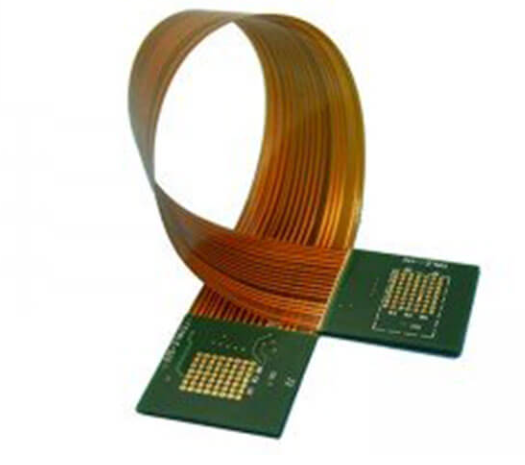
4.PCBA production equipment
(1)Solder paste printer
Modern solder paste printers are generally composed of mechanisms such as plate loading, solder paste adding, stamping, and circuit board feeding. Its working principle is: first fix the circuit board to be printed on the printing positioning table, and then the left and right scrapers of the printer will print the solder paste or red glue through the steel mesh on the corresponding pads. For the PCB with uniform leakage, it will be input to the patch machine through the transmission table for automatic patching.
(2)Chip Mounter
Chip Mounter: Also known as “mounting machine” or “surface mount system” (Surface Mount System), it is configured after the solder paste printer in the production line. It is a device that accurately places surface mount components on the PCB pads by moving the mounting head. It is divided into manual and fully automatic.
(3)Reflow Oven
There is a heating circuit inside the reflow oven, which heats the air or nitrogen to a high enough temperature and blows it to the circuit board where the components have been mounted, so that the solder on both sides of the components melts and bonds with the main board. The advantage of this process is that the temperature is easy to control, oxidation can be avoided during the welding process, and the manufacturing cost is easier to control.
(4)AOI Detector
AOI (Automatic Optic Inspection) stands for automatic optical inspection, which is a device that detects common defects encountered in welding production based on optical principles. AOI is a new type of testing technology that has just emerged, but it has developed rapidly, and many manufacturers have launched AOI testing equipment. During automatic detection, the machine automatically scans the PCB through the camera, collects images, compares the tested solder joints with the qualified parameters in the database, and checks the defects on the PCB through image processing, and displays/marks the defects through the display or automatic mark for maintenance personnel to repair.
(5)Component pin cutting machine
Used to cut and deform the pin components.
(6)Wave soldering
Wave soldering is to make the soldering surface of the plug-in board directly contact with the high-temperature liquid tin to achieve the purpose of soldering. The high-temperature liquid tin maintains an inclined surface, and a special device makes the liquid tin form a wave-like phenomenon, so it is called “wave soldering”. Its main material is solder bar.
(7)Tin furnace
Generally speaking, tin furnace refers to a soldering tool used in electronic soldering. It has good soldering consistency for discrete component circuit boards, convenient and fast operation, and high work efficiency. It is a good helper for your production and processing.
(8)Board washing machine
Used to clean PCBA boards and remove the residues on the boards after soldering.
(9)ICT Test Fixture
ICT Test mainly uses the test probe to contact the test points on the PCB layout to detect the open circuit, short circuit, and welding of all parts of the PCBA
(10)FCT Test Fixture
FCT (Functional Test) refers to a test method that provides a simulated operating environment (excitation and load) to the test target board (UUT: Unit Under Test) to make it work in various design states, thereby obtaining the parameters of each state to verify the function of the UUT. Simply put, it is to load the UUT with appropriate excitation and measure whether the output response meets the requirements.
(11)Aging Test Stand
Aging test stands can test PCBA boards in batches, and test problematic PCBA boards by simulating user operations for a long time.
PCBA outsourcing refers to the PCBA processing manufacturer outsourcing the PCBA order to other powerful PCBA processing manufacturers. So, what are the general requirements for PCBA outsourcing?
A.Bill of Materials
Components should be inserted or mounted strictly in accordance with the bill of materials, PCB silk screen printing and outsourcing processing requirements, when the material does not match the list, PCB silk screen, or contradicts the process requirements, or the requirements are unclear and cannot be operated, you should contact our company in time to confirm the correctness of the material and process requirements.
B. Anti-static requirements
- All components are treated as electrostatic sensitive devices.
- All personnel who come into contact with components and products must wear anti-static clothing, anti-static wristbands, and anti-static shoes.
- During the raw material entry and storage stage, electrostatic sensitive devices are all packaged in anti-static packaging.
- During the operation, use an anti-static work surface, and use anti-static containers to hold components and semi-finished products.
- The welding equipment is reliably grounded, and the soldering iron is anti-static. All must be tested before use.
- Anti-static boxes are used for storage and transportation of semi-finished PCB boards, and anti-static pearl cotton is used as isolation materials.
- Anti-static packaging bags are used for the whole machine without a shell.
- Provisions on the direction of component appearance identification
- Polar components are inserted according to polarity.
- When components with screen printing on the side (such as high-voltage ceramic capacitors) are inserted vertically, the screen printing faces right; when inserted horizontally, the screen printing faces downward. When components with screen printing on the top (excluding chip resistors) are inserted horizontally, the font direction is the same as the screen printing direction of the PCB board; when inserted vertically, the top of the font faces right.
- When resistors are inserted horizontally, the error color ring faces right; when inserted horizontally, the error color ring faces downward; when resistors are inserted vertically, the error color ring faces the board surface.
- Welding requirements
- The pin height of the inserted component on the welding surface is 1.5~2.0mm. Chip components should be flat against the board surface, the solder joints should be smooth without burrs and slightly arc-shaped, and the solder should exceed 2/3 of the height of the solder end, but should not exceed the height of the solder end. Less tin, spherical solder joints or solder-covered patches are all bad;
- Solder joint height: The height of solder climbing pins should not be less than 1mm for single-sided boards, and not less than 0.5mm for double-sided boards, and tin should be penetrated.
- Solder joint shape: Conical and covered with the entire pad.
- Solder joint surface: Smooth and bright, without black spots, flux and other debris, without spikes, pits, pores, exposed copper and other defects.
- Solder joint strength: Fully wetted with pads and pins, no cold solder joints or false solder joints.
- Solder joint cross section: When cutting the component pins, try not to cut the solder part, and there should be no tin cracking on the contact surface between the pins and the solder. There are no spikes or barbs at the cross section.
- Needle seat welding: The needle seat requires the bottom board to be inserted, and the position is correct and the direction is correct. After the needle seat is welded, the bottom floating height does not exceed 0.5mm, and the seat body is skewed and does not exceed the silk screen frame. The rows of needle seats should also be kept neat, and no front-to-back misalignment or unevenness is allowed
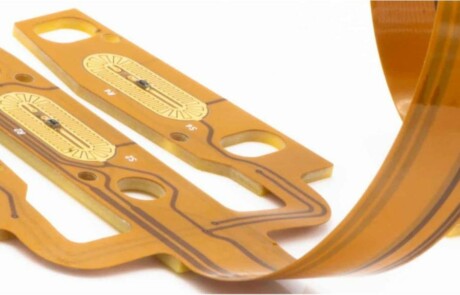
C.Transportation
To prevent PCBA damage, the following packaging should be used during transportation:
- Container: anti-static turnover box.
- Isolation material: anti-static pearl cotton.
- Placement spacing: There is a distance of more than 10mm between PCB boards and between PCB boards and the box body.
- Placement height: There is a space of more than 50mm from the top of the turnover box to ensure that the turnover box does not press the power supply when stacking, especially the power supply with wires.
D.Board washing requirements
The board surface should be clean, without tin beads, component pins, and stains. Especially at the solder joints on the plug-in surface, no dirt left by welding should be seen. When washing the board, the following devices should be protected: wires, connecting terminals, relays, switches, polyester capacitors and other easily corrosive devices, and relays are strictly prohibited from being cleaned with ultrasonic waves.
E.All components are not allowed to exceed the edge of the PCB board after installation.
When the PCBA passes through the furnace, the pins of the plug-in components are washed by the tin flow, and some plug-in components will be tilted after passing through the furnace for soldering, causing the component body to exceed the silk screen frame. Therefore, the repair personnel behind the tin furnace are required to make appropriate corrections.



